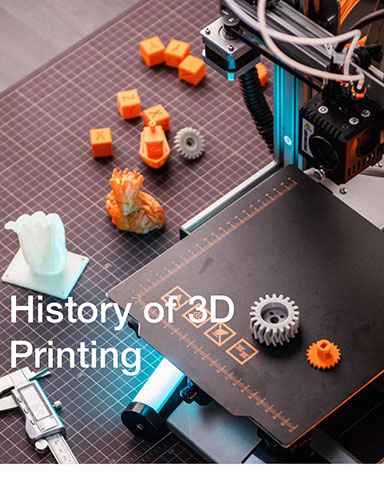History of 3D Printing
3D Printing started as an extremely expensive, niche method of manufacturing that held few advantages over more traditional methods, and over the course of its lifetime became much more advanced.

February 14, 2023
The origins of 3D printing go all the way back to the 1980s. Dr. Hideo Kodama of the Nagoya Industrial Research Institute published research in 1981 on a technique very similar to what eventually would be called stereolithography (SLA).
However, it wasn’t until 1987 when a patent was first filed and the first SLA printer was created by Charles Hull, who is widely considered the true inventor of 3D printing.
Over the next two years, Selective Laser Sintering (SLS) and Fused Deposition Modeling (FDM) printers were first developed, heating up the competition in the 3D printing space. No other major developments came along until the 90s, when Binder Jetting technology and 3D printers capable of making wax molds used for injection molding were invented.
By the early 2000s, 3D printers had become capable of printing functional human organs, though these mostly existed more as prototypes and proofs of concept rather than organs worthy of transplanting. However, there were some successful transplants of 3D printed organs – most notably 10 patients received bladder transplants using bladders printed from their existing bladder tissue. Best of all, this method of organ transplant eliminates the risk of the body rejecting the transplanted organ since it’s made of the patient’s own tissue.
Download the paper to read more about the history of 3D Printing.
Fill out the information below to download the resource.
Latest News







